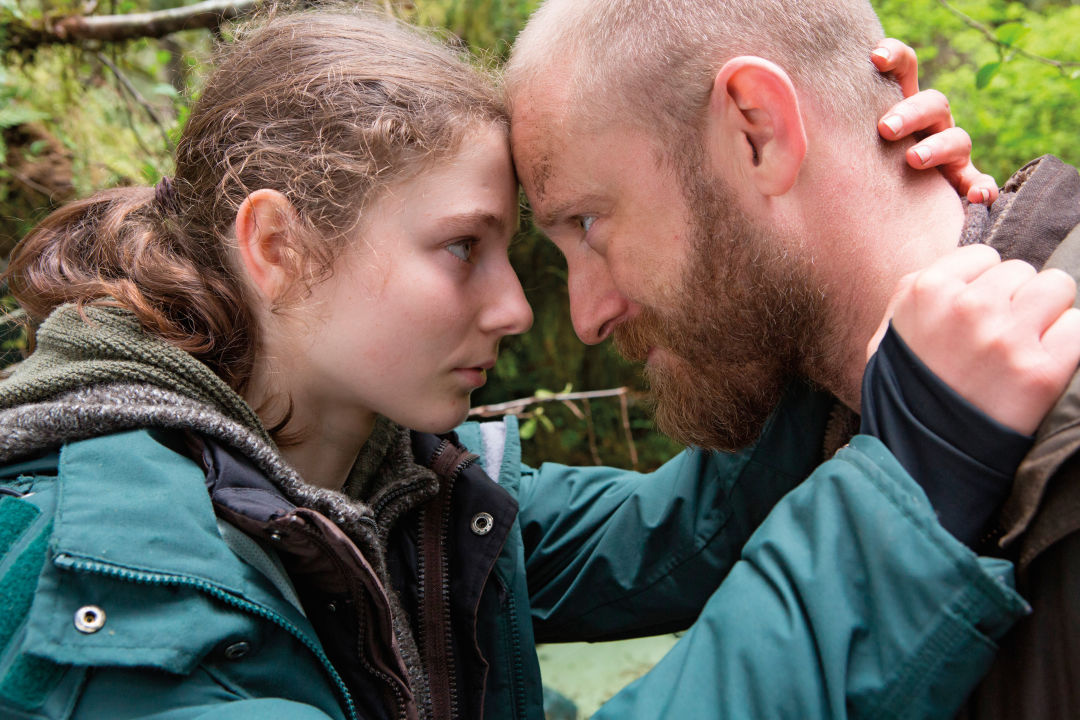In a New Film, a Father and Daughter Go Off the Grid in Forest Park

Thomasin McKenzie and Ben Foster in Leave No Trace
The news stunned Portland: In spring 2004, a father and his 12-year-old daughter were discovered living in Forest Park. They told police they’d been there—deep in the woods, in a shelter dug into a remote hillside—for four years. They were clean and healthy, and the girl was bright; her father, a Vietnam vet, had reportedly home-schooled her with the help of old encyclopedias. A police sergeant set them up with lodging on a horse farm in Yamhill County. But just a few days after relocating, they disappeared, and, as the legend goes, were never heard from again.
A new movie tells their story (or a version of it, at least). Leave No Trace, directed by Debra Granik—best known for Winter’s Bone, which jump-started Jennifer Lawrence’s career—premiered in January at Sundance to effusive reviews and is now opening in Portland. The film is vivid and empathetic, as attuned to the lush greens of the Pacific Northwest—it was shot here—as to the tender relationship between father and daughter, played by Ben Foster and New Zealand newcomer Thomasin McKenzie. Granik says she wanted to explore how veterans, and those around them, cope with postcombat hypervigilance.
“He managed it by living as clandestinely as possible, as calmly as possible,” she says. “And she’s got this very profound caring. She relies on her father, but she also knows when to kick in as a guide to lead him to a better place.”
Viewers may draw a quick comparison between Leave No Trace and Winter’s Bone: two stories of off-the-grid existence. But Granik points out that the characters in each film come to that life via fundamentally different paths. In the Ozarks, where Winter’s Bone is set, the ways of the holler are inherited over generations. In Leave No Trace, meanwhile, the two make choices that actively go against the culture around them.
“To me, the similarity is more that they’re people outside the mainstream,” Granik says. “I don’t go seeking these stories, but the themes no doubt attract me, because it’s hard to go against the grain. It’s hard to live with less in a country that prizes more. It’s hard to build your identity with very little material wealth when in this country, a lot of the way we develop our self-esteem is based on how much we own, how much we earn.”
In making the film, adapted from a novel by Reed College professor Peter Rock, Granik called on a legion of local experts. Portland-based crew members gave tips on shooting in the rain (say what you will about our region’s perpetual dampness, but it makes for rich reflectivity and texture onscreen), while social workers, park rangers, veterans, and police officers offered insight. (Portland Police spokesman Pete Simpson even makes a brief cameo.) Local primitive-skills guru Nicole Apelian schooled Foster and McKenzie on survival know-how (if you run out of clean water, squeeze moisture from moss; it serves as an excellent natural filter), while a formerly homeless Portlander who lived for three years in Washington Park showed off his solar egg cooker. For a brief church scene, the film crew even bused in a devotional dance troupe from Klamath Falls.
“Everything is buttressed by layers of Oregon and Portland culture,” Granik says. “The tapestry of artists and experts that contributed is really extensive. This is their film, too.”




